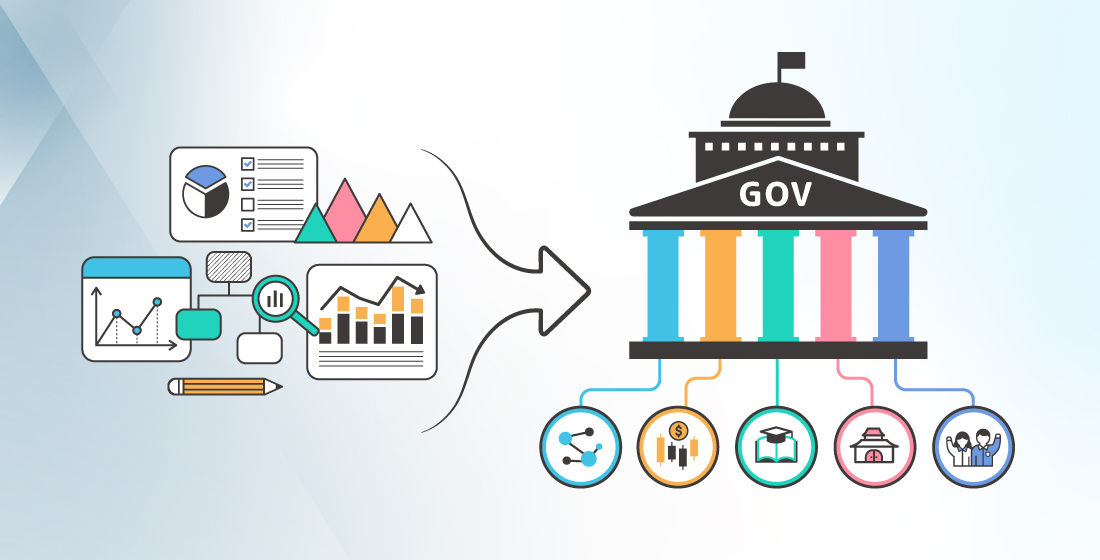National Digital Development Research
The primary items of the "Progressing Toward Digital Equality Program (2020-2023)," which is in accordance with the fourth principle of the "Smart Taiwan Program (2021-2025)," "Digital Inclusivity," include conducting digital development research, current national digital development progress research and analysis, and the provision of digital development research data required for ministries to promote digital equality policies. These help attain goals such as improving Taiwan’s digital inclusiveness, bridging digital divides, realizing actualization through education, and establishing rolling surveys of digital talent and skill level certification.
To implement the aforementioned policies, "digital opportunity research" has transformed into "digital development research" since 2020. Through a system of objective, scientific, and broad-ranged digital development indicators, Taiwan’s national digitalization progress is evaluated and monitored regularly so the government and citizens are informed about the maturity of Taiwan’s digital development. Additionally, based on indicator evaluation, the government can monitor other countries’ progress, assess the external environment where trends in international digital development are rapidly changing, and review and plan digitization policies with digital inclusiveness in mind. In doing so, the government can meet international trends, clearly represent Taiwan’s current progress in digital development, and reinforce connections between research results and policies.
Taiwan’s digital development research system matches the Organization for Economic Co-operation and Development’s (OECD) "Well-being Framework," featuring 12 dimensions and 74 indicators, some of which are local indicators designed to reflect Taiwan’s national conditions, while others are defined according to OECD’s Well-being Framework.
| Main Dimensions | Sub-dimensions | Indicator |
|---|---|---|
| ICT Access, Usage, and Literacy | Environmental access opportunities | Household internet access |
| 5G internet coverage | ||
| Internet connection device ownership | ||
| Mobile service pricing | ||
| Use of the internet | People using the internet | |
| Internet use frequency | ||
| Variety of uses of the internet | E-mailing for private purpose | |
| Searching for information about goods or services | ||
| Downloading software | ||
| Consulting wikis | ||
| Internet banking | ||
| Instant messaging | ||
| Online entertainment | ||
| Online reading | ||
| Cloud space | ||
| Mobile payment | ||
| Digital video and audio editing | ||
| Digital contents creation | ||
| Inequality in internet uses | Quick-adaptors and user majority internet use type and item difference | |
| Regional difference in accessibility | ||
| Identity difference in accessibility | ||
| Information usage skills | Information filtering skills | |
| Housing | Smart home | Usage of services or applications associated with smart surveillance (internet surveillance, biometrics, anti-theft, and anti-disaster) |
| Usage of services or applications associated with smart appliances (internet-connected appliances, smart sensing, energy-saving controls) | ||
| Usage of services or applications associated with smart care (internet-connected medical equipment, care systems, smart bracelets) | ||
| Usage Digital Home Entertainment Services or Apps (Smart TV, smart speaker, online console gaming) | ||
| Education and Skills | Digital skills | Problem-solving skills in technology-rich environments |
| Student ICT skills | ||
| Digital skills gap | Coefficient of variation of score in problem-solving in technology-rich environments | |
| Digital resources at school | Internet environment at school | |
| Internet speed differences between schools | ||
| Teacher ICT skills | Inefficient ICT skills reported by teachers | |
| Online courses | Online course participation | |
| Income and Wealth | Labor market returns to ICT tasks | Wage premium associated with digital skills |
| Online consumption | Purchasing goods or services online | |
| Selling online | Selling goods or services online | |
| Jobs | Employment in information industries | Share of information industries as a percent of total employment |
| Work digitalization level | Computer or internet application level in workers’ job | |
| Jobs at risk of automation | Automation rate in jobs | |
| Online job search | Job search or resume submission through the internet | |
| Reduction in extended job strain associated with computer-based jobs | Job flexibility and workplace safety | |
| Job stress associated with computer-based jobs | Job stress and resources | |
| Work-life Balance | Teleworking | Teleworking experiences |
| Worries about work outside work time | Work/life division | |
| Health Status | Medical appointments online | Online registration |
| Online health information | Seeking health information online | |
| Physical health risks | Physical function deterioration due to internet use | |
| Mental health risks | Mental function deterioration due to internet use | |
| Social Connections | Use of online social networking sites | Use of online social networking sites |
| Digital content participation | Digital content participation | |
| Cyberbullying | Experiences with cyberbullying | |
| Governance and Civil Engagement | Civil participation | Expression of political opinions online |
| Public policy internet participation platforms | ||
| Open government | Open data | |
| E-government services | Use of e-government services | |
| Lack of skills as a barrier to accessing e-government services | ||
| Governance and Civil Engagement | Exposure to disinformation online | Exposure to disinformation online |
| Environmental Quality | E-waste er capita | E-waste generated per capita |
| Personal Digital Security | Information security measures | Information security measures taken |
| Cybersecurity threats | Information security issues | |
| Online privacy abuses | Concerns about privacy abuses | |
| Subjective Well-being | Life satisfaction gains associated with Internet access | Increase in life satisfaction |
